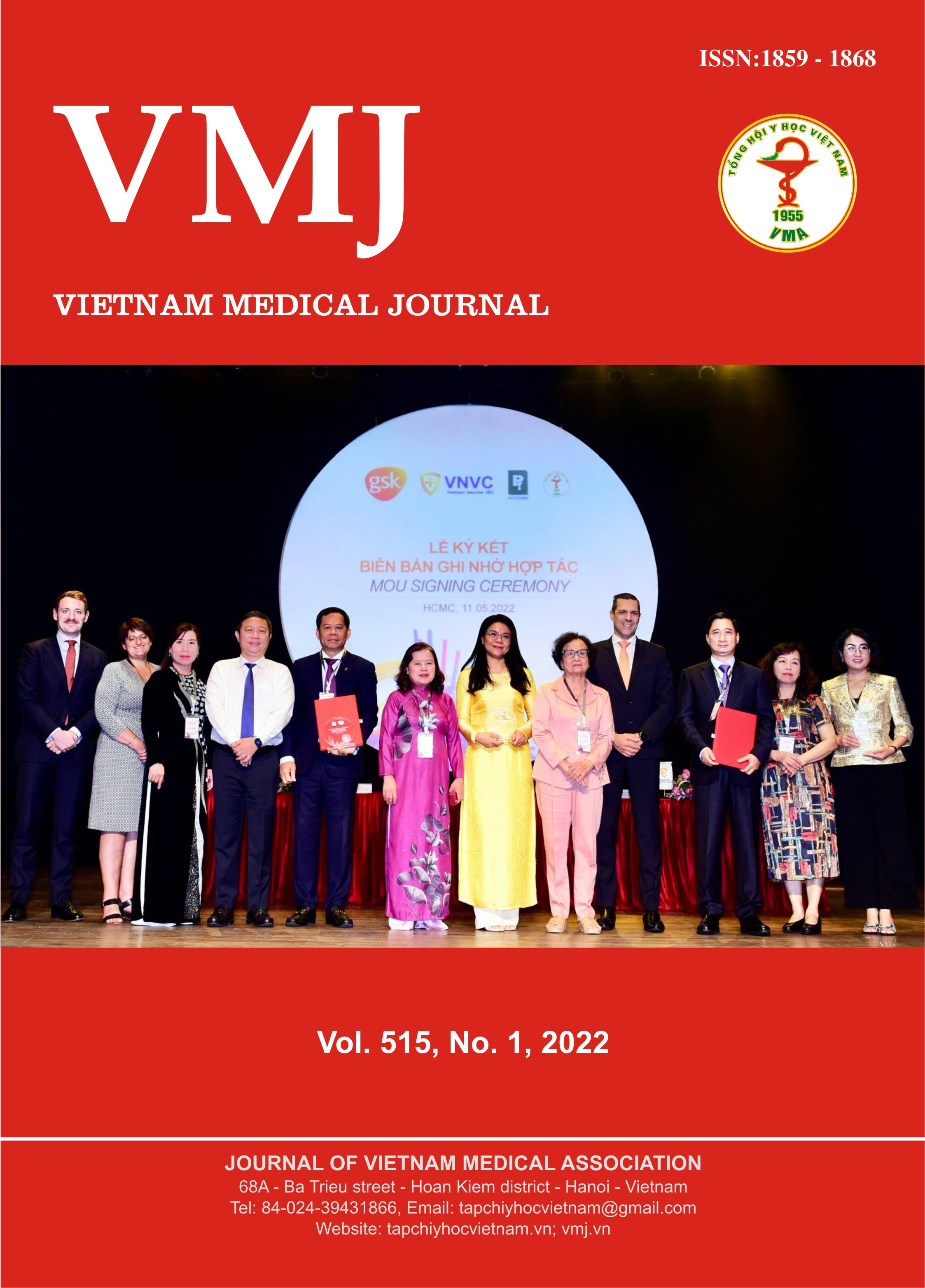PERCUTANEOUS NEPHROLITHOTRIPSY PRACTICE IN VIETNAM: A SYSTEMATIC SCOPING REVIEW
Nội dung chính của bài viết
Tóm tắt
Introduction: Percutaneous nephrolithotripsy is safe and effective for managing renal calculi but complex and expensive. Different institutions with different resource readiness as well as approaches might show differences in outcomes. Our systematic scoping review aimed to map the evidence body as well as review effectiveness of the technique in national scale in over three decades of practice. Methods: This research was carried out with studies on percutaneous nephrolithotripsy in Vietnam by searching full text articles via following databases as well as search engines: PubMed/MEDLINE, Cochrane Library, Embase, Google Scholar, http://lienthuvien.yte.gov.vn/ - an online library run by Vietnam’s Ministry of Health; and by searching directly in the library of Hanoi Medical University. Study selection process followed the PRISMA flow chart of study search and selection. The data from selected studies were extracted with double check before summarizing and charting the data. Results: Preliminary data analysis from 30 selected studies showed that approximately 20 years from the first performance, percutaneous nephrolithotripsy gradually transferred from more resource readiness centers to lesser counterparts. The transference was accomplished to some extent, reflecting on improvement in operation time, surgical conversion rate, stone free rate, as well as on a decrease in the rate of severe complications. Conclusion: This systematic scoping review mapped evidence body in national range regarding percutaneous nephrolithotripsy. It suggests that a more homogeneous research design should be obtained for more precisely picturing clinical practice.
Chi tiết bài viết
Từ khóa
Percutaneous nephrolithotripsy, scoping review, renal stones, Vietnam
Tài liệu tham khảo
2. Chen Y, Feng J, Duan H, et al. Percutaneous nephrolithotomy versus open surgery for surgical treatment of patients with staghorn stones: A systematic review and meta-analysis. Wang S, editor. PLOS ONE. 2019;14:e0206810.
3. Nguyen HD, Tran LLP. Defining the learning curve for percutaneous nephrolithotomy. Hoc TP Ho Chi Minh. 2009;13:1-7.
4. Schilling D, Gakis G, Walcher U, et al. The learning curve in minimally invasive percutaneous nephrolitholapaxy: a 1-year retrospective evaluation of a novice and an expert. World J Urol. 2011;29:749-753.
5. De S, Autorino R, Kim FJ, et al. Percutaneous Nephrolithotomy Versus Retrograde Intrarenal Surgery: A Systematic Review and Meta-analysis. Eur Urol. 2015;67:125-137.
6. Nguyen TV, Vu VT, Vinh T, et al. Percutaneous nephrolithotomy in Binh Dan hospital. Ho Chi Minh city; 2000.
7. Tricco AC, Lillie E, Zarin W, et al. PRISMA Extension for Scoping Reviews (PRISMA-ScR): Checklist and Explanation. Ann Intern Med. 2018;169:467-473.
8. Duong VT, Trinh HH, Nguyen VH, et al. Experiences of renal stone fragmentation with the use of the ultrasound-guided mini-percutaneous nephrolithotipsy (mini-pcnl) in 1200 patients. Int Med J. 2021;28:236-239.
9. Huu Son N. The surgical outcome of percutaneous nephrolithotomy based on principle of right triangle for renal access with fix C-arm and no the contrast. Biomed J Sci Tech Res [Internet]. 2019 [cited 2021 Jun 13];17. Available from: https://biomedres.us/fulltexts/BJSTR.MS.ID.003065.php.
10. Page MJ, McKenzie JE, Bossuyt PM, et al. The PRISMA 2020 statement: an updated guideline for reporting systematic reviews. Syst Rev. 2021;10:89.
11. Dindo D, Demartines N, Clavien P-A. Classification of Surgical Complications: A New Proposal With Evaluation in a Cohort of 6336 Patients and Results of a Survey. Ann Surg. 2004;240:205-213.
12. Turk C., Skolarikos A. EAU guidelines on urolithiasis. EAU Guidelines Office, Arnhem, the Netherlands; 2020. Available from: http://uroweb.org/guidelines/compilations-of-all-guidelines/.
13. Nguyen TTT. Early diagnosis of renal stone by urinary sediment dynamic test. Hoc TP Ho Chi Minh. 2004;8:81-87.


